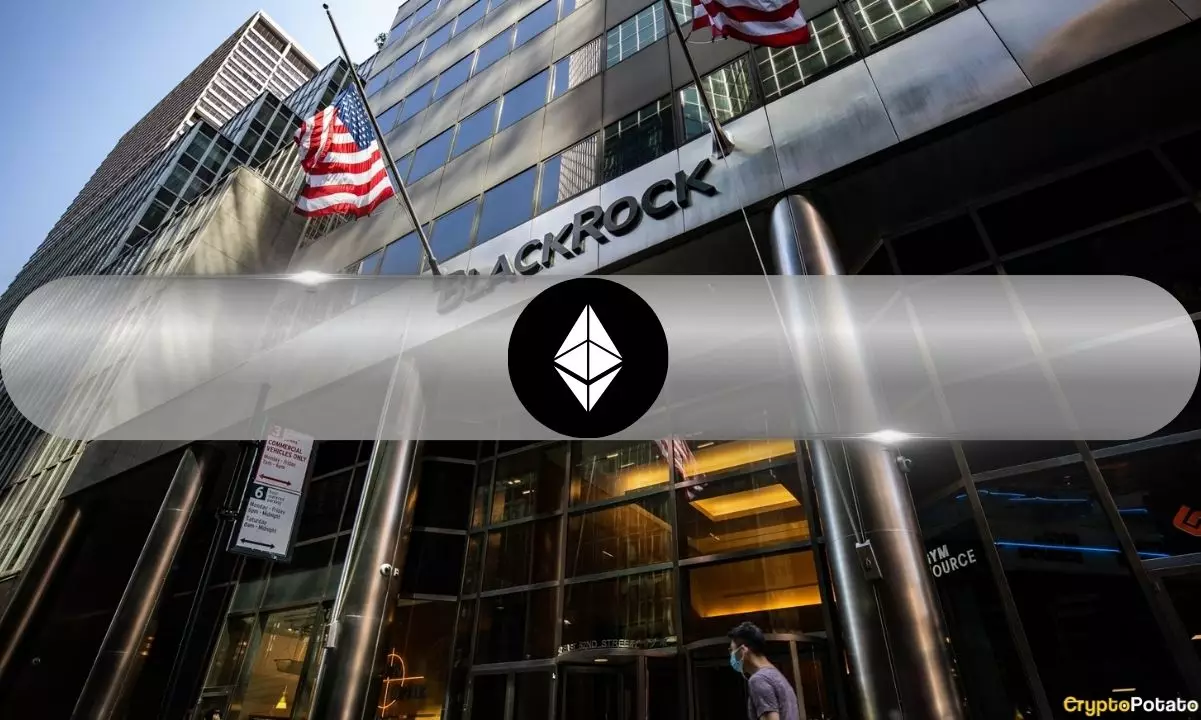In a significant development celebrated by the crypto community, BlackRock, a colossal player in the financial industry, is making waves by tokenizing its $150 billion Treasury Trust Fund on Ethereum. The implications of this move are profound, marking what has been dubbed the largest real-world asset flow to the Ethereum blockchain to date. This isn’t just another strategic investment; it signals a transformative moment that could redefine how we understand finance and investment in the digital age.
Understanding the Mechanism: Tokenization and Its Impact
Tokenization, the process of converting an asset into a digital token on a blockchain, promises to revamp the speed and efficiency of financial transactions. BlackRock CEO Larry Fink has posited that such advancements could eliminate the tedious delays typically associated with trading, which can span days. With immediate settlement of transactions, the pool of billions of dollars currently tied up by archaic processes could be reallocated, spurring economic growth.
The prospect of using blockchain technology as a means to track asset ownership through a reputable financial entity like BNY Mellon presents an intriguing case for the reliability and security of such digitized holdings. When titanic financial institutions take such bold steps towards you’re utilizing blockchain, it’s a sign that the tide is turning in favor of digital assets—an indication that even traditional finance giants see the immense potential of this technology.
Ethereum—The Leading Blockchain Ecosystem
As BlackRock leans into Ethereum, it reinforces the perception of Ethereum as the leading ecosystem for real-world asset (RWA) tokenization, currently dominating 56% of the market. The trust BlackRock is showing in Ethereum serves not only as a validation of its technology but also as an endorsement of its potential to consolidate its status in a rapidly evolving financial landscape.
Research indicates that BlackRock’s previous foray into digital assets via its BlackRock USD Institutional Digital Liquidity Fund (BUIDL) garnered impressive participation, with 93% of assets reported on Ethereum. This further cements the reputation of Ethereum as the de facto standard for institutions eager to explore the advantages of digital asset management.
The Market Response: Opportunities Amidst Volatility
Despite the optimistic developments, Ethereum’s price has not performed as its fundamentals would suggest. Currently languishing around its September 2023 lows, ETH still finds itself 63% down from its 2021 peak and has recorded a near 50% decline since the start of the year. Yet, skeptics who view this downturn as a signal of failure miss a crucial narrative: price does not always reflect inherent value.
With institutions like BlackRock accumulating assets in ETH—over $162 million in the last few trading days—it’s evident that larger players are prepared to capitalize on what they consider discounted prices. Investors often focus on immediate gains, but the long-term potential of tokenized assets could be worth the current bearish sentiment. Historically, breakthrough innovations in finance often come at times when prevailing asset values do not capture their future trajectory.
Institutional Trust and Its Ripple Effects
The weight of support from major institutional players like BlackRock not only legitimizes Ethereum in the eyes of traditional financiers but also fosters a trust ecosystem where more institutions might follow suit. For equities and commodities, institutional confidence often leads to increased participation and more liquidity. The same is likely true for tokenized assets like ETH.
Communities supporting Ether should be optimistic about this growth phase. Institutions gravitate towards projects that promise deep liquidity and credible neutrality—qualities that have developed around Ethereum’s decentralized nature. As Ethereum evolves, the platform could become a foundation that more institutions leverage, moving outright from traditional methods to ones backed by blockchain technology.
Ultimately, the strides made by BlackRock signify more than just the burgeoning interest in Ethereum; they embody a shift in the entire investment paradigm. The fusion of blockchain and finance isn’t merely aspirational; it’s becoming the reality of modern economics, and those who recognize this early will be poised to reap substantial benefits when the broader market adjusts to the impending transformation.

